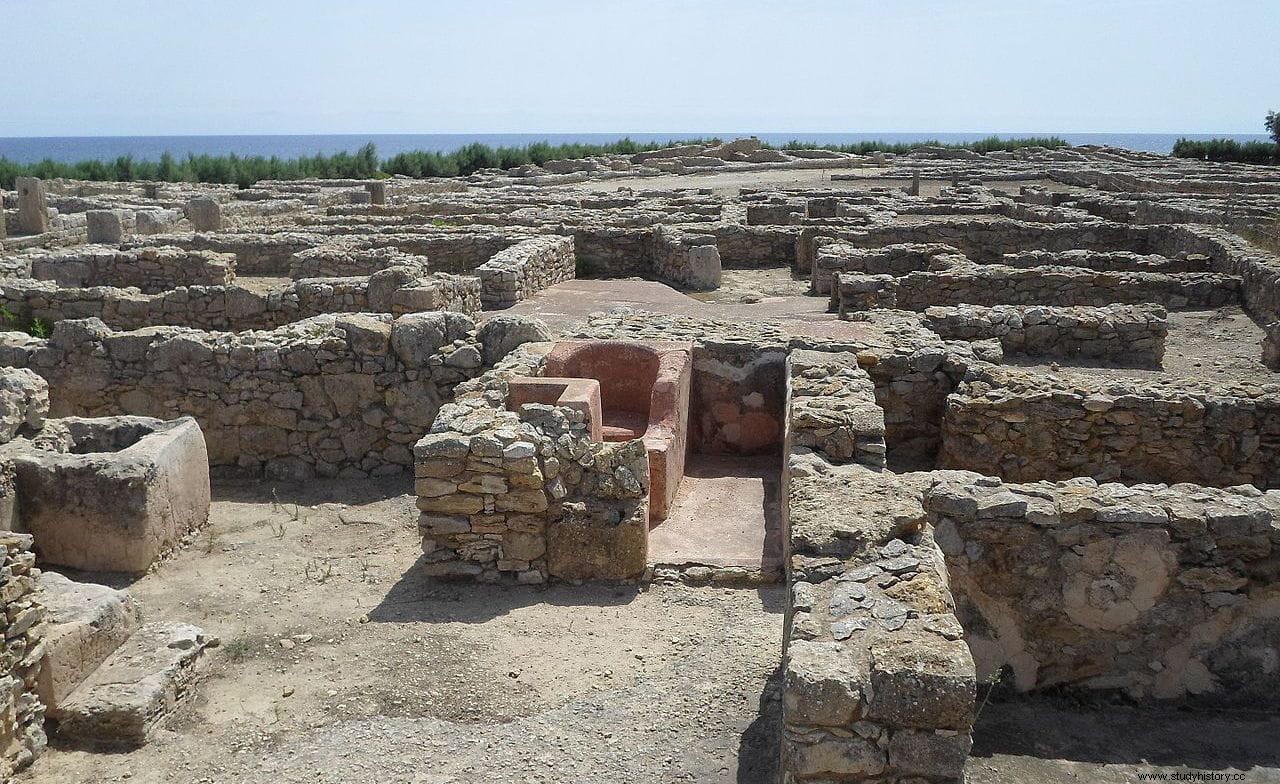In 1952 the French archaeologist Pierre Cintas, a specialist in Punic archeology and famous, among other things, for having discovered the founding deposit of Carthage, together with Charles Saumagne, discovered the ruins of a Carthaginian city in northeastern Tunisia, near Cape Bon .
The following year the excavations began, which brought to light a residential area and a necropolis with the peculiarity that no signs of Roman presence, such as ceramics or coins, were found in them.
It was concluded that it was a Carthaginian city, probably destroyed during the First Punic War, which was never rebuilt and was therefore abandoned between 250 and 241 BC.

For this reason, it is considered the only Punic city that was not rebuilt or modified by later cultures, and it is a unique example of what Carthaginian cities were like.
Excavations revealed structures dating to the 4th and 3rd centuries BC. with buildings raised on a grid of wide streets and numerous public squares. Many houses still had their walls standing and the colored clay with which they were decorated was visible on their facades.

The city is not mentioned in any source or ancient document, so its true name is completely unknown to archaeologists. They called it Kerkouane because that is how the current inhabitants of its surroundings know the area.
Kerkouane was not a large city, although it is considered one of the four main Carthaginian cities along with Hadrumentum (modern Susa), Utica, and Carthage itself. Its inhabitants were engaged in fishing and crafts, and the presence of numerous murex shells indicates that the city produced the famous purple dye so appreciated in the ancient world.
A wine jug decorated with black figures and scenes from the Odyssey, together with an Ionic cup found in the excavations, allowed us to place the approximate foundation of the city around the 6th century BC. Greek-style architectural elements such as peristyles and plaster decorations, found among the remains of private homes, show that the city maintained cultural contacts with the Mediterranean world.

Excavations carried out between 1976 and 1977 brought to light what is considered to be the largest Punic sanctuary in the entire western Mediterranean, which still preserves some columns and mosaics. It has an area that could have been dedicated to ritual banquets and offerings, although it is unknown to which deities it was consecrated. Based on artifacts found at the site (such as two terracotta heads showing two men wearing conical hats), it is speculated that they could have been Melqart, Sid, and Tanit.
The site covers an area of about eight hectares and although the city was located on the coast, it did not have a port. It was surrounded by a wall formed by two enclosures separated by a vast intermediate corridor whose width varies from 7 to 13 meters, which served for circulation between the two enclosures and the constructions intended to reinforce the defensive system:watchtowers and observation, stairs or stairways to access the corridor, doors and porches.

Originally, the two enclosures were plastered and whitewashed and, together with the intermediate corridor, were about 15 meters thick. The structure of the inner wall was similar to that of some Eastern cities, with stones in the shape of a fishbone.
It had three main squares separated by a few meters that were probably places for trade, as several ceramic fragments of different types (amphorae, plates, bowls, jugs) were found, as well as coins with the head of a female deity in the reverse and a horse on the obverse.
The advanced urban hydraulic system stands out, with wastewater drainage, cisterns and canals with pipes and sculpted gargoyles for rainwater. Each house had its bathroom located near the entrance hall, with mosaic paving and a bathtub with seats.

In 1985, UNESCO declared Kerkouane a World Heritage Site, given that it is an exceptional testimony of Phoenician-Punic urbanism. It is the only known Punic city in the Mediterranean that houses a mine of information on urban planning (development of the space respecting a pre-established general plan:wide and fairly straight streets form a checkerboard network, whose squares are filled with the insulae) and architecture (defensive, domestic, religious, craft structures, construction techniques and materials). From the data discovered, the archaeologist can trace the profile of a Punic city as it was between the 6th and the middle of the 3rd century BC. The discovery of Kerkouane contributes considerably to improving the knowledge of the Phoenician-Punic sites in the Mediterranean .
